
virginia vehicle inspection checklist pdf
The Virginia Vehicle Inspection Checklist PDF is a comprehensive guide ensuring vehicles meet state safety and emissions standards. It outlines essential checks for brakes‚ tires‚ lights‚ and emissions‚ helping owners prepare for inspections and maintain roadworthiness.
- Ensures compliance with Virginia’s safety requirements.
- Covers both safety and emissions inspections.
- Available as an official downloadable PDF resource.
It’s a vital tool for vehicle owners and inspectors‚ providing a structured approach to verifying a vehicle’s readiness for the road while promoting public safety and environmental protection.
Importance of Vehicle Inspection in Virginia
Vehicle inspection in Virginia ensures that all registered vehicles are mechanically safe and environmentally compliant. This mandatory process helps reduce accidents caused by faulty vehicles and promotes road safety. Regular inspections also verify emissions compliance‚ contributing to cleaner air and a healthier environment. By identifying potential issues early‚ inspections prevent breakdowns and maintain the overall condition of vehicles. Compliance with inspection requirements is crucial for vehicle registration and operation in Virginia‚ making it a cornerstone of responsible vehicle ownership and public safety;
- Ensures road safety by identifying faulty components.
- Reduces environmental impact through emissions checks.
- Prevents costly repairs by addressing issues early.
Purpose of the Virginia Vehicle Inspection Checklist
The Virginia Vehicle Inspection Checklist serves as a detailed guide for both inspectors and vehicle owners. Its primary purpose is to ensure that all vehicles meet the state’s safety and emissions standards. The checklist outlines specific components to be inspected‚ such as brakes‚ tires‚ lights‚ and emissions systems. By following this structured approach‚ inspectors can systematically evaluate each vehicle‚ ensuring compliance with regulations. The checklist also helps owners identify and address potential issues beforehand‚ simplifying the inspection process and reducing the likelihood of failure.
- Guides inspectors through a systematic evaluation process.
- Helps owners prepare their vehicles for inspection.
- Ensures compliance with state safety and emissions standards.
Main Components of the Virginia Vehicle Inspection
The inspection focuses on safety and emissions‚ covering tires‚ brakes‚ lights‚ and emissions systems; It ensures vehicles meet state standards for roadworthiness and environmental compliance.
- Safety checks: tires‚ brakes‚ and lighting.
- Emissions testing: ensuring environmental compliance.
Safety Inspection Checklist
The Virginia Safety Inspection Checklist ensures vehicles are roadworthy. Key components include tire tread depth‚ brake functionality‚ and proper operation of all lights and signals.
- Tires: Minimum tread depth of 2/32” required.
- Brakes: Functioning brake pads and rotors.
- Lights: Headlights‚ taillights‚ turn signals‚ and brake lights must work.
- Steering and suspension systems: No excessive wear or damage.
- Horn and mirrors: Must be in good condition.
This checklist helps vehicle owners identify potential issues before inspection‚ avoiding failure and ensuring safe operation.
Emissions Inspection Checklist
The Virginia Emissions Inspection Checklist focuses on reducing pollution. It includes checks for catalytic converters‚ emissions control systems‚ and proper OBD-II functionality.
- Catalytic converter: Must be present and functioning.
- OBD-II system: No active trouble codes.
- Emissions control devices: Intact and operational.
- Exhaust system: No leaks or damage.
This checklist ensures vehicles meet state emissions standards‚ reducing environmental impact and promoting cleaner air quality.

Official Inspection Procedure
The official inspection involves removing the old sticker‚ driving into the inspection lane‚ and conducting a thorough check of brakes and parking brake functionality.
- Remove the old inspection sticker.
- Drive into the designated inspection lane.
- Inspect brakes and parking brake.
This structured process ensures compliance with state regulations and vehicle safety standards. It also helps maintain accurate inspection records.
Step-by-Step Guide to the Inspection Process
The inspection process begins with removing the old sticker and driving into the designated lane. Next‚ the vehicle undergoes a thorough brake inspection‚ including the parking brake.
- Remove the old inspection sticker from the windshield.
- Drive the vehicle into the inspection lane and position it as instructed.
- The inspector will check the brakes‚ ensuring proper function and wear.
- The parking brake is tested for effectiveness.
Additional checks may include tire tread depth‚ lights‚ and emissions. Following these steps ensures a smooth and efficient inspection process. Proper preparation helps avoid delays and potential failures. Always refer to the official checklist for detailed guidance.
Removing the Old Inspection Sticker
Before starting the inspection‚ the old sticker must be removed. This ensures the inspector can apply the new sticker correctly. Use a razor blade or adhesive remover to gently peel it off‚ avoiding damage to the windshield. If the sticker is torn or leaves residue‚ carefully scrape it off. Proper removal is essential for a valid inspection and sticker placement. Failure to remove the old sticker may result in inspection delays. Always handle the windshield with care to avoid scratches or damage during removal. This step is crucial for compliance and inspection efficiency.
Driving the Vehicle into the Inspection Lane
Once the old sticker is removed‚ carefully drive your vehicle into the designated inspection lane. Ensure the vehicle is stationary‚ with the engine turned off and the parking brake engaged. Properly position the vehicle to allow the inspector easy access to all components. The tires should be straight‚ and the vehicle must be on a level surface. This step ensures the inspection process begins smoothly and safely‚ enabling the inspector to evaluate brakes‚ emissions‚ and other critical systems effectively. Proper positioning is essential for accurate assessment and compliance with state regulations.
- Position the vehicle on a level surface.
- Ensure the parking brake is fully engaged.
- Keep the engine turned off during the inspection.
Brake Inspection Procedure
The brake inspection involves checking the entire braking system for wear‚ damage‚ or leaks. Inspectors examine brake pads‚ rotors‚ drums‚ and shoes‚ ensuring they meet minimum thickness requirements. The brake fluid level and condition are also verified. Hydraulic lines are inspected for leaks or damage‚ and the parking brake is tested for proper functionality. Any evidence of contamination or excessive wear will result in a failure. This step ensures the vehicle can stop safely and reliably under normal driving conditions.
- Check brake pads‚ rotors‚ and drums for wear.
- Inspect brake fluid level and condition.
- Test parking brake functionality.
- Ensure no hydraulic leaks or damage.
Parking Brake Inspection
The parking brake inspection ensures the system can hold the vehicle stationary on an incline. Inspectors test the brake’s engagement and release mechanisms. They check for proper adjustment and any signs of wear or damage to cables‚ levers‚ or actuators. The parking brake must function correctly to prevent rollaways‚ ensuring safety when parked. This step is critical for overall vehicle safety and compliance with Virginia’s inspection standards.
- Test parking brake engagement and release.
- Check for proper adjustment and functionality.
- Inspect cables‚ levers‚ and actuators for wear or damage.
- Ensure the brake can hold the vehicle on an incline.
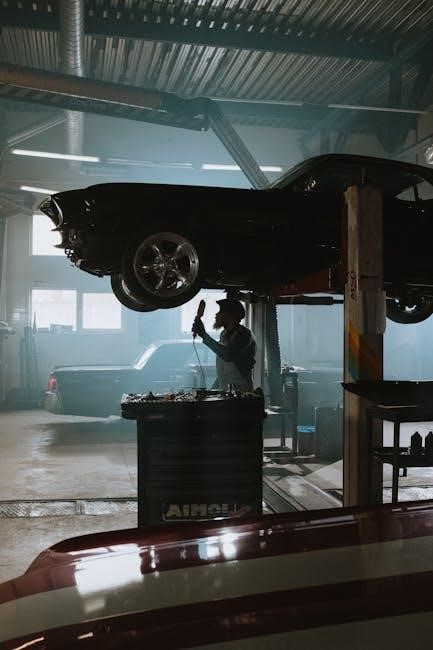
Virginia Vehicle Inspection Checklist PDF Details
The Virginia Vehicle Inspection Checklist PDF is an official document detailing safety and emissions inspection requirements. It includes a structured format for recording inspection results‚ ensuring compliance with state standards. Available for download‚ it guides vehicle owners and inspectors through the process‚ ensuring accuracy and transparency.
- Official document for safety and emissions checks.
- Structured format for clear inspection documentation.
- Downloadable resource for easy access.
How to Obtain the Official PDF Checklist
To obtain the Virginia Vehicle Inspection Checklist PDF‚ visit the official Virginia Department of Motor Vehicles (DMV) website. Navigate to the “Forms and Publications” section and search for the vehicle inspection checklist. Download the PDF directly from the site. Ensure it is the most recent version to comply with current regulations. This resource is free and accessible‚ providing a clear and detailed guide for both safety and emissions inspections.
- Visit the official Virginia DMV website.
- Access the “Forms and Publications” section.
- Download the latest version of the checklist.
Structure and Content of the PDF
The Virginia Vehicle Inspection Checklist PDF is organized into clear sections for easy reference; It begins with vehicle identification details‚ followed by safety and emissions inspection checklists. The document includes specific tests for brakes‚ tires‚ lights‚ and suspension‚ as well as emissions components like the OBD-II system and fuel cap. A certification section is provided for inspectors to validate results. The PDF is user-friendly‚ ensuring compliance with state regulations and simplifying the inspection process for both vehicle owners and inspectors;
- VIN‚ make‚ model‚ year‚ and mileage fields.
- Comprehensive safety inspection checklist.
- Emissions inspection requirements.
- Certification section for official approval.
Pre-Inspection Checklist for Vehicle Owners
To ensure a smooth inspection process‚ vehicle owners can use the Virginia Vehicle Inspection Checklist PDF to prepare. This section provides a detailed list of items to check beforehand‚ such as tire tread depth‚ brake functionality‚ and proper lighting operation. Owners can verify the condition of the spare tire‚ windshield wipers‚ and mirrors. Additionally‚ it reminds owners to check for any dashboard warning lights and ensure all emissions-related components are secure. Addressing these issues early reduces the risk of inspection failure and ensures road safety.
- Check tire tread depth and look for uneven wear;
- Ensure all lights‚ including headlights and turn signals‚ are working.
- Verify brake responsiveness and parking brake function.
Vehicle Inspection Form and Required Documents
The Virginia Vehicle Inspection Form is essential for documenting the inspection process. Required documents include proof of insurance‚ vehicle identification number (VIN)‚ and current mileage reading.
- Ensure the vehicle’s VIN is clearly visible.
- Provide valid insurance cards or policy documents.
Understanding the Inspection Form
The Virginia Vehicle Inspection Form is a detailed document used to record the results of a vehicle’s safety and emissions inspection. It includes sections for the inspector’s certification‚ vehicle identification details‚ and a checklist of inspected components. The form must be completed in full‚ with no erasures or alterations‚ to ensure accuracy. It serves as official proof that the vehicle meets state standards. Proper completion is essential for obtaining the required inspection sticker and registering the vehicle in Virginia.
- Contains vehicle-specific information like VIN and mileage.
- Documents the inspection results for safety and emissions.
- Must be signed by a certified inspector.
Documents Needed for Inspection
To complete a Virginia vehicle inspection‚ specific documents must be presented. These include the vehicle’s registration card or title‚ a valid government-issued photo ID‚ and proof of insurance. If the vehicle is new or recently purchased‚ a bill of sale or purchase agreement may also be required. Additionally‚ any emissions-related repair receipts should be available if repairs were made. Ensuring all documents are up-to-date and accessible streamlines the inspection process and avoids delays.
- Vehicles registration or title
- Valid photo ID
- Proof of insurance
- Bill of sale (if applicable)
- Emissions repair receipts (if needed)
- Insufficient tire tread depth
- Brake system malfunctions
- Non-operational lights or signals
- Emissions test failure
- Minimum tread depth: 2/32 of an inch
- Measure across the tire’s surface
- Uneven wear or bald spots result in failure
- Inspect brake pads‚ rotors‚ and fluid for damage or leaks
- Check brake lights and pedal responsiveness
- Address worn or warped components before inspection
- Cash
- Credit/Debit Cards
- Checks (where accepted)
- Required documents: inspection sticker‚ insurance‚ and title.
- Payment methods: online‚ mail‚ or in-person.
- Renewal ensures legal operation of your vehicle.
- Review the inspection report for specific failures.
- Complete necessary repairs and obtain a re-inspection.
- Ensure compliance to pass within the allowed timeframe.
- Ensures vehicle safety and emissions compliance.
- Includes detailed checks for brakes‚ tires‚ and lights.
- Requires proper documentation and preparation.
- Ensures vehicle safety and performance.
- Prevents costly repairs by identifying issues early.
- Supports environmental protection through emissions compliance.
- Required for vehicle registration.
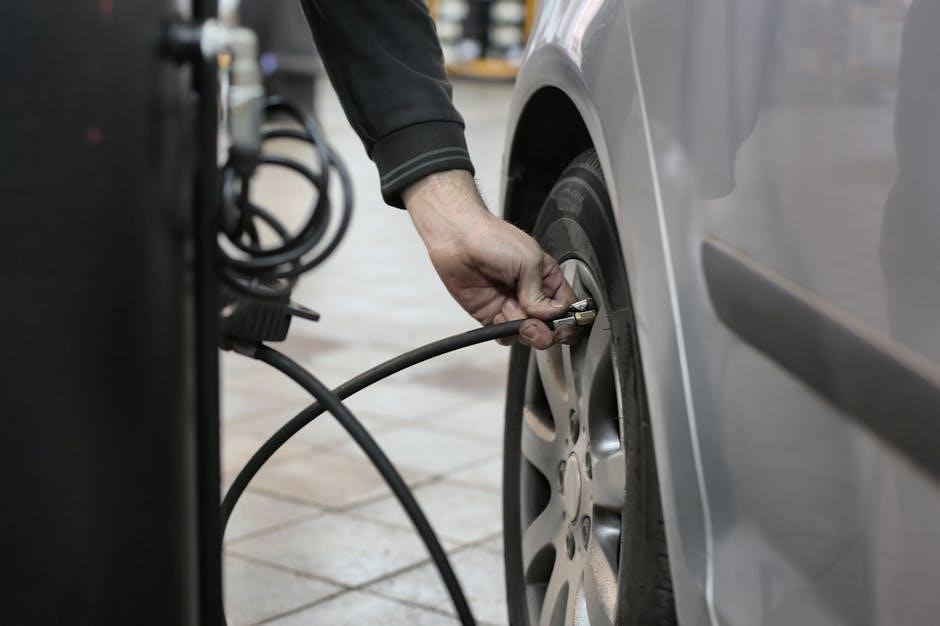
Common Reasons for Inspection Failure
Vehicles often fail inspection due to issues like insufficient tire tread depth‚ malfunctioning brakes‚ or non-operational lights. Emissions failures and defective exhaust systems are also common.
Tire Tread Depth Requirements
Tire tread depth is a critical factor in Virginia’s vehicle inspection. The minimum legal tread depth is 2/32 of an inch across the tire’s surface. Inspectors measure this using a tread depth gauge or a penny inserted into the groove. Tires with uneven wear or bald spots are deemed unsafe and will cause inspection failure. Proper tread ensures traction‚ braking efficiency‚ and vehicle control‚ especially on wet roads. Owners should regularly check tread depth to avoid costly repairs and inspection issues.
Brake System Failures
Brake system failures are a common cause of Virginia vehicle inspection failures. Inspectors check for worn or damaged brake pads‚ warped rotors‚ leaking brake fluid‚ and malfunctioning brake lights. Proper brake function is essential for safety‚ and any defects can lead to immediate failure. Vehicle owners should address issues like spongy brake pedals or unusual noises promptly to avoid inspection issues. Regular maintenance‚ including pad replacements and fluid checks‚ ensures compliance with Virginia’s strict brake safety standards.
Emissions Testing in Virginia
Emissions testing in Virginia ensures vehicles meet state and federal environmental standards. It involves checking the catalytic converter‚ exhaust system‚ and emissions control devices to reduce emissions.
Emissions Inspection Procedure
The emissions inspection procedure in Virginia involves a series of tests to ensure vehicles comply with environmental standards. The process begins with an OBD-II scan to check for emissions-related issues. Next‚ inspectors visually inspect the catalytic converter‚ exhaust system‚ and emissions control devices. Exhaust emissions are measured using specialized equipment to verify pollutant levels. If all components pass‚ the vehicle is deemed emissions-compliant. This procedure is essential for maintaining air quality and ensuring vehicles meet state regulations. Proper documentation is provided upon completion.
Required Emissions Testing Documents
For emissions testing in Virginia‚ specific documents are mandatory. Vehicle owners must present a valid vehicle registration‚ proof of insurance‚ and a completed emissions inspection form. Additionally‚ the OBD-II scan report is required for vehicles equipped with this system. Proper identification of the vehicle and owner must be provided. All documents must be up-to-date and match the vehicle’s details. Failure to provide these documents may result in delays or denial of the inspection. Ensuring all paperwork is in order streamlines the process and avoids unnecessary complications.

Exemptions and Waivers
Certain vehicles are exempt from Virginia’s inspection requirements‚ including newer models‚ historic vehicles‚ and those with specific waivers. Owners must submit proper documentation to qualify.
Vehicles Exempt from Inspection
Certain vehicles are exempt from Virginia’s safety and emissions inspections. These include new vehicles within the first year of purchase‚ historic vehicles with historic plates‚ and farm trucks used exclusively for agricultural purposes. Additionally‚ vehicles with a gross weight over 10‚001 pounds and motorcycles are also exempt. Owners of these vehicles must submit proper documentation to confirm their eligibility. Exemptions ensure fairness and reduce unnecessary inspections for vehicles with specific uses or classifications. Always verify with official state guidelines for the most accurate information.
How to Apply for an Inspection Waiver
To apply for an inspection waiver in Virginia‚ vehicles must meet specific eligibility criteria. Owners should first confirm their vehicle qualifies for a waiver through the Virginia Department of Motor Vehicles (DMV). Required documentation‚ such as proof of eligibility and vehicle registration‚ must be submitted. Applications can be processed online or in person at a DMV office. Once approved‚ the waiver exempts the vehicle from the standard inspection requirements. Ensure all guidelines are followed to avoid delays or rejection of the waiver request. Visit the official Virginia DMV website for detailed instructions and forms.

Inspection Process for Rebuilt or Reconstructed Vehicles
Rebuilt or reconstructed vehicles in Virginia must undergo a detailed inspection process‚ including safety and emissions evaluations. Proper documentation and certification are required to ensure compliance with state standards.
Special Requirements for Rebuilt Vehicles
Rebuilt vehicles must undergo a detailed inspection process to ensure compliance with Virginia’s safety and emissions standards. The inspection includes a thorough check of brakes‚ tires‚ and emissions systems. Proper documentation‚ such as reconstruction certificates and repair records‚ must be provided. The vehicle must pass both safety and emissions tests to receive certification. This process ensures that rebuilt vehicles meet state requirements and are safe to operate on Virginia’s roads.
Documentation Needed for Reconstructed Vehicles
Reconstructed vehicles require specific documentation for inspection. This includes a reconstruction certificate‚ detailed repair records‚ and a vehicle identification number (VIN) verification. All modifications must be documented‚ and the vehicle must meet Virginia’s safety and emissions standards. Proper paperwork ensures compliance and simplifies the inspection process. Failure to provide required documents may result in inspection delays or rejection. Ensure all records are complete and accurate before submitting for review.
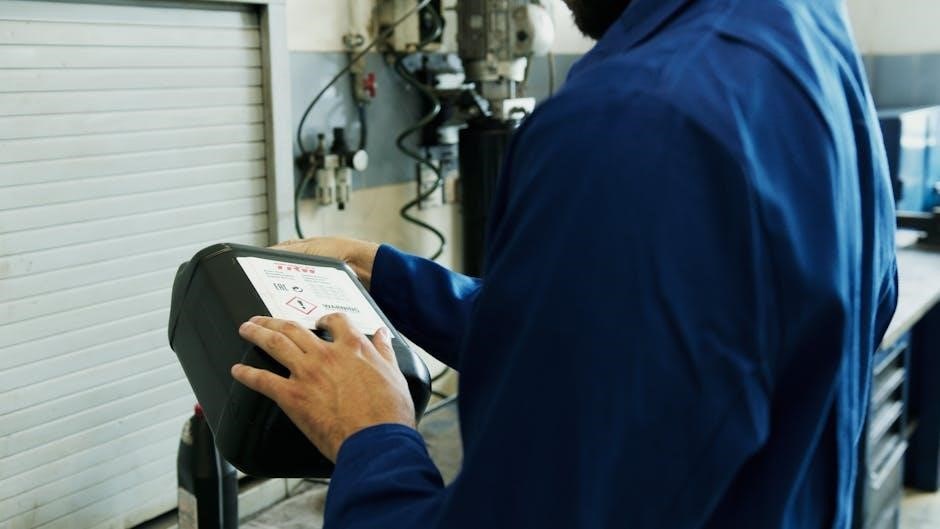
Cost and Payment Methods
Inspection fees in Virginia are standardized‚ with payments accepted via cash‚ credit cards‚ or checks. Ensure payment methods are confirmed before proceeding with the inspection process.
Inspection Fees in Virginia
In Virginia‚ the standard inspection fee for most vehicles is $51‚ covering both safety and emissions checks. This fee is uniform statewide and includes a thorough assessment of your vehicle’s mechanical condition. Additional costs may apply for re-inspections or duplicate certificates. A re-inspection fee of $27 is charged if your vehicle fails the initial inspection but passes within 14 days. Payment methods typically include cash‚ credit cards‚ or checks‚ depending on the inspection station. Ensure you verify the exact fees with your inspector beforehand to avoid any discrepancies.
Accepted Payment Methods
Virginia vehicle inspection stations typically accept various payment methods for convenience. Cash‚ major credit cards like Visa‚ MasterCard‚ and Discover‚ and personal checks are commonly accepted. Some stations may also accept debit cards or mobile payments. It’s advisable to call ahead and confirm accepted payment methods with the inspection station to avoid any inconvenience. Ensure you have the correct payment ready before the inspection to streamline the process and avoid delays.
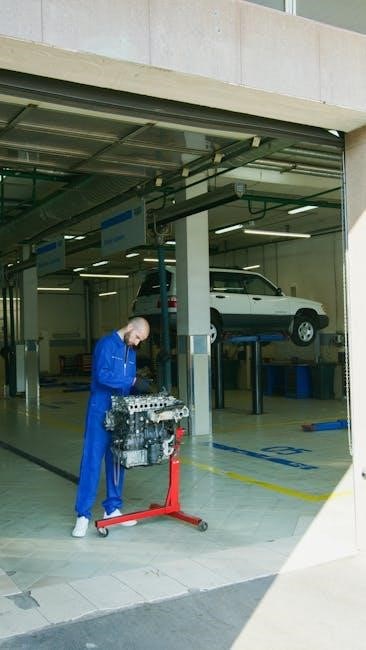
After Passing the Inspection
Upon passing‚ you’ll receive a new inspection sticker and a completed inspection report. This sticker must be displayed on your vehicle‚ ensuring compliance with state regulations and supporting public safety.
Obtaining the Inspection Sticker
After passing the Virginia vehicle inspection‚ an official inspection sticker is issued. This sticker must be affixed to the front windshield of your vehicle‚ typically on the driver’s side. The sticker serves as proof of compliance with state safety and emissions standards. It is valid for one year from the date of inspection. Ensure the sticker is clearly visible to avoid potential fines or penalties. Keep the inspection report for your records‚ as it may be required for future reference or vehicle registration.
Registering Your Vehicle
After passing the Virginia vehicle inspection‚ you must register your vehicle with the Department of Motor Vehicles (DMV). Provide the inspection sticker‚ proof of insurance‚ and vehicle title or registration documents. Ensure all fees are paid‚ including registration and local taxes. Renewal can be done online‚ by mail‚ or in person. Proper registration ensures compliance with state laws and avoids penalties. Keep your registration card in the vehicle at all times. Timely registration maintains your vehicle’s legal status on Virginia roads.

What to Do If Your Vehicle Fails Inspection
If your vehicle fails inspection‚ address the identified issues promptly. Repair any defective components and schedule a re-inspection within 15 days to avoid penalties.
Understanding the Re-Inspection Process
If your vehicle fails inspection‚ you must address the issues and schedule a re-inspection within 15 days. Present the original inspection report to the inspector. No additional fee is charged if the re-inspection occurs within this timeframe. Ensure all repairs are completed and documented before returning. The inspector will only re-check the failed items. This process ensures compliance with Virginia’s safety standards‚ allowing you to obtain the necessary inspection sticker and maintain legal vehicle operation.
Necessary Repairs and Re-Inspection Fees
Necessary repairs must be completed based on the inspection report to address failed items. Repairs should be done by a qualified technician to ensure compliance with Virginia’s standards. After repairs‚ the vehicle must undergo a re-inspection within 15 days to avoid additional fees. The re-inspection fee is waived if done within this timeframe. Beyond 15 days‚ the full inspection fee applies. The inspector will only re-examine the failed components. Proper documentation of repairs is required for the re-inspection process to be valid. This ensures compliance and allows the issuance of a new inspection sticker.
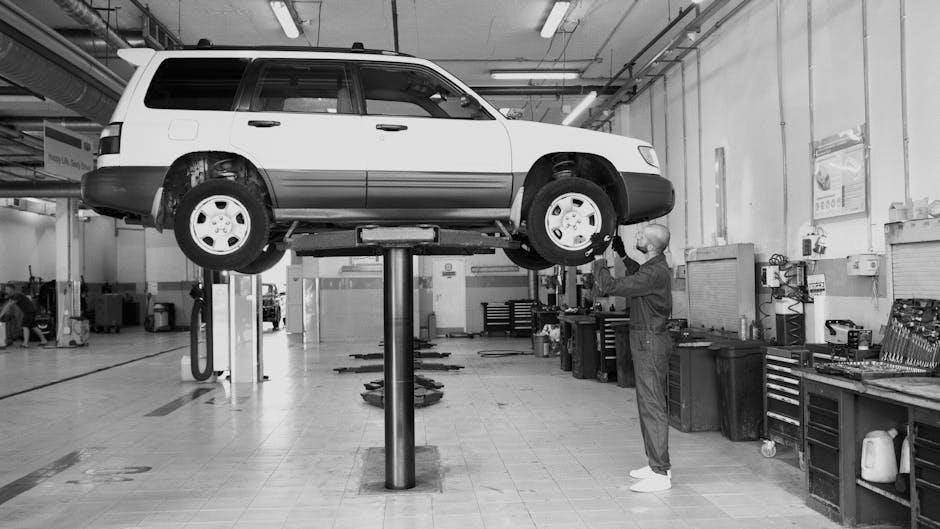
Disputing Inspection Results
If you disagree with the inspection outcome‚ you can appeal by contacting the inspection station or seeking a re-inspection through official channels to resolve discrepancies.
How to Appeal an Inspection Result
If you believe your vehicle’s inspection result is incorrect‚ you can appeal by first reviewing the inspection report for errors. Contact the inspection station to request a re-inspection or clarification. If unresolved‚ escalate the issue to the Virginia State Police or DMV‚ providing detailed documentation‚ such as the Vehicle Inspection Report (VIR). This process ensures fairness and accuracy‚ allowing vehicle owners to address potential discrepancies effectively while adhering to state regulations and procedures.
The Appeals Process
The Virginia appeals process allows vehicle owners to challenge inspection results. After identifying discrepancies‚ submit a formal request to the Virginia State Police or DMV. Provide the VIR and any supporting evidence. A hearing may be scheduled to review the case. Owners can present their case‚ and a decision will be rendered. This process ensures transparency and fairness‚ allowing vehicle owners to seek resolution if they believe their inspection result was incorrect or unfair.
The Virginia Vehicle Inspection Checklist PDF serves as a vital resource for ensuring vehicle safety and compliance with state regulations. Regular inspections promote road safety‚ reduce emissions‚ and maintain vehicle reliability. By adhering to the checklist‚ owners can confidently prepare for inspections‚ ensuring their vehicles meet all necessary standards. This structured approach supports both public safety and environmental protection‚ making it an essential tool for all Virginia vehicle owners.
The Virginia vehicle inspection process ensures vehicles are safe and environmentally compliant. It includes safety checks for brakes‚ tires‚ lights‚ and emissions testing. Owners must remove old inspection stickers and present required documents. Inspectors follow a structured procedure‚ examining critical components to ensure roadworthiness. The process promotes public safety‚ reduces emissions‚ and maintains vehicle reliability. Preparation using the official checklist is key to passing inspections efficiently. This systematic approach helps owners address issues early‚ ensuring compliance with state regulations and supporting overall road safety.
Regular inspections are essential for maintaining roadworthiness and environmental standards in Virginia.
Benefits of Regular Vehicle Inspections
Regular vehicle inspections in Virginia ensure safety‚ prevent mechanical failures‚ and reduce emissions. They help maintain vehicle performance‚ identify potential issues early‚ and prevent costly repairs. Inspections promote environmental protection by ensuring emissions compliance. They also provide peace of mind for drivers and contribute to safer roads. Additionally‚ passing inspections is required for vehicle registration‚ making it a legal and practical necessity. Overall‚ regular inspections benefit both vehicle owners and the community by enhancing safety and sustainability.
Regular inspections are a proactive approach to maintaining roadworthiness and contributing to public safety.
Leave a Reply
You must be logged in to post a comment.